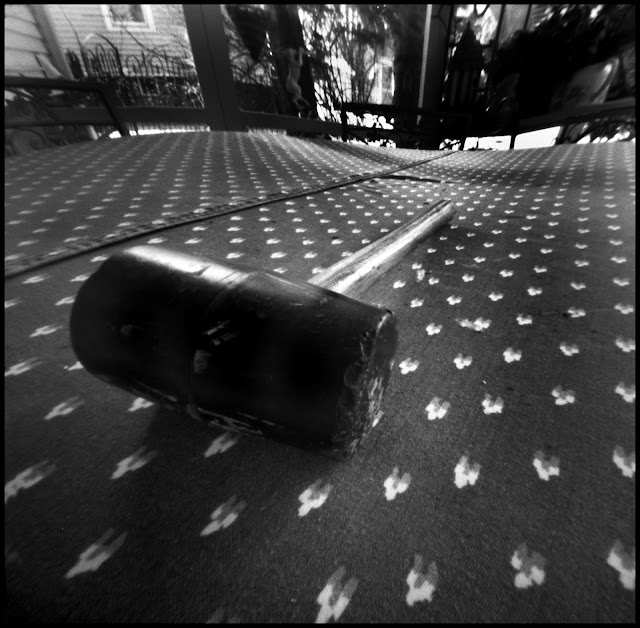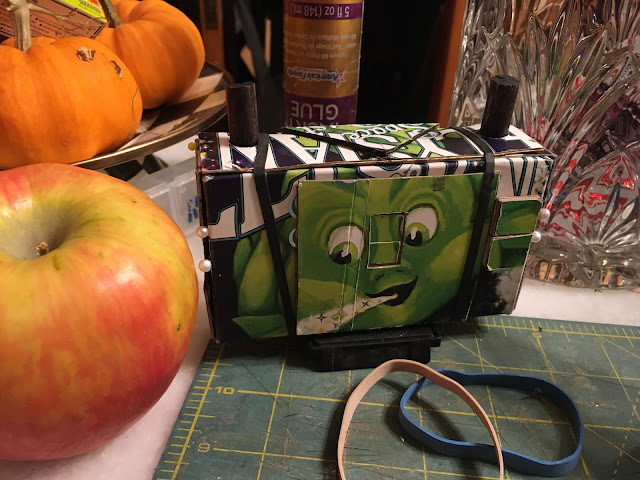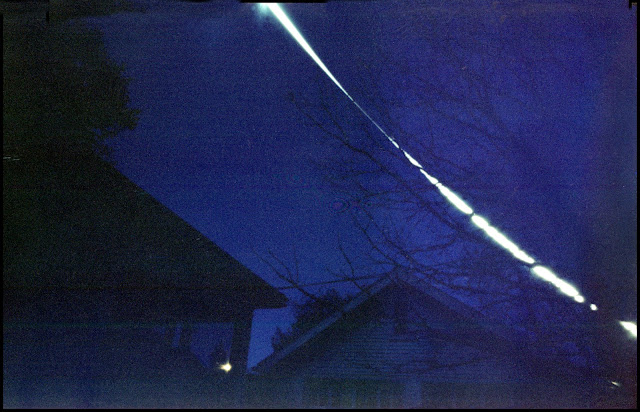I'm currently in a situation where I'm obsessively building cameras. I'm going to make some teenagers do it this summer so I’d better know what I’m talking about. They’re going to be making either a 30mm, 45mm or 60mm camera, probably chosen by lots. I decided to start with the 30mm since I had to modify the template for that distance to the pinhole.
I should be working on only what will be in those workshops this summer, but of course I'm distracted by a few other things.
Since Andy and Kristin are such fans of
Untapped, I try to get an unusual microbrewery product they can add to their life list when they come for Yule - this time
Elysian Fields Space Dust IPA from Seattle. It’s also kind of a funny six pack. I shouldn’t be making these cameras out of products that I can’t acknowledge the existence of around children. I also shouldn’t be spending time trying to line things up exactly either. As it turned out the designs I was trying to match weren’t the same size but it actually turned out a little better, after I customized a double shutter for it.
The pinholes are a little big. After about six tries I came up with a .25mmm and two .26mm pinholes and nothing closer to the optimal .231mm for this distance to the film. I am trying to model the expertise of an eleven-year old. (Wasn’t that when Harry Potter started at Hogwarts?) I just mounted the .25mm on the axis, with one of the .26mm rising and called it f120.
As unexpectedly as the Spanish Inquisition, I mounted the axial pinhole too low and got a good profile of the lower edge of the shutter. I really thought I’d checked that.
You know I’m a big fan of the rising pinhole, but guess which one I used for 11 of the 12 exposures.
Oh well, there’s always cropping.
I don’t want to repeat another
Yule Haul, but I got a full deck of cards in my Christmas cracker
Mickey and Minnie contribute the spooky element on top the piano.
The heavy metal pumpkins are less obviously Halloween artifacts.
King Kong and a little cardboard skeleton contribute to the theme in the kitchen.
I pointed directly at the sun which was behind the clouds and between the trees to demonstrate how low it was. The whole sky is overexposed so you can't really tell.
Somehow I made the beautiful light and the elegant Koehler fixtures seem a little pedestrian.
After having such
fun with Sarah’s spooky cube in the winter sun, I’ve been very frustrated that the only sunny days since have been 10° F
colder and I haven’t been able to brave a ride on my bicycle without a specific destination. After riding to the grocery store on one of those cold sunny days, I walked around the corner to get the rising front image of the Glad Tiding Tabernacle.
I thought the congregation had moved this summer, but it turned out they were just cleaning the sign.
In addition to the surprise with the pinhole placement, I learned numerous lessons in camera making and maybe pedagogy.
Making this camera and another after it, I discovered I had the film bay spacers just a hair too long on the redesigned templates. It's surprising how rigid cardboard can be when squeezing a film reel. Easily fixed on both, but I had to do repairs mid-roll on this 30mm in order to wind all the way to the end.
A big change in the pedagogy of those classes next summer is maybe using black and white instead of color. With the film, developing, making the automatic prints and scanning, the color was getting pretty expensive, and everybody kept spooking me that I wouldn't be able to come up with 24 rolls of 120 when I needed it. I never noticed any "out of stock" warnings with Arista.edu and Fomapan and there are about six other choices less expensive than Ektar 100. Black and white is also a bit of a mind twist for kids living with camera phones,
I was also concerned that the kids wouldn't really get to experience wet photography. It's technically pretty interesting and I've always thought it useful to know as much as possible about your medium. I can't imagine turning an 11 year old loose in a darkroom trying to load any kind of film reel but I realized I could just load the reels before class. We could develop them together in the sink in the classroom. Using Caffenol for developer, we could pour it down the sink, retaining the fixer with a stern warning about heavy metal pollution. Since a 30 oz. tank takes two reels, they could work in pairs to agitate while I extol on the wonders of the reduction of a salt.
I maybe could borrow six 120 reels and three 30 oz. tanks. If I could they might be old-style stainless steel reels.
I started to look how much tanks and reels cost and found two stainless reels and a tank for half as much as anything else I'd seen, coincidentally from the pinhole-evangelists at Blue Moon Camera in Portland.
Since we've lived in this house, I've developed film on a Yankee Clipper Roll Film Tank.
I now have enough to develop three rolls of film at once, half-way to what I need.
The Yankee Tank was with the darkroom equipment that came with the house. I still have the box but it's in pretty bad shape. I remember these being dismissed as low quality by the grad school faculty but I've never had any trouble with it.
You can still buy them.
I just noticed on the bottom it's labeled Windman Brothers.
I'm going have to load as many as six rolls in an hour over a lunch break. I hadn't loaded 120 film on a stainless reel for 40 years but I got it right the first time!
We also need to make positives. Sorry printmakers, it's just impossible to be wet about this. I hope to do a group portrait on paper and develop and contact print it in front of them in the supply closet.
I'm getting familiar with digital camera capture of negatives. I'll have Sarah's Nikon D750 with the Micro Nikkor 55mm f2.8, and the museum has that vlogger's favorite, a Sony A7 with a lens that might focus that close. I did all these negatives with the D750. I haven't quite learned to get the best negative possible but it's within editable range.
They'll have iPads to edit on. I think I've found a free app that captures and reverses a negative with the iPad camera. That would allow them all to work on capturing negatives at the same time and we wouldn't have to mess with transfering everyone's images onto their iPad.
We should be able to make big prints on a color printer.
I'd appreciate any input on any of this.
The pinhole pictures are done with T-Max 100 semistand developed in Rodinal 1:100.














































